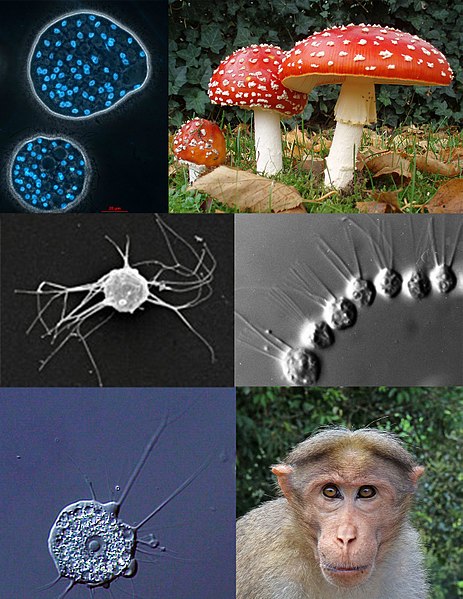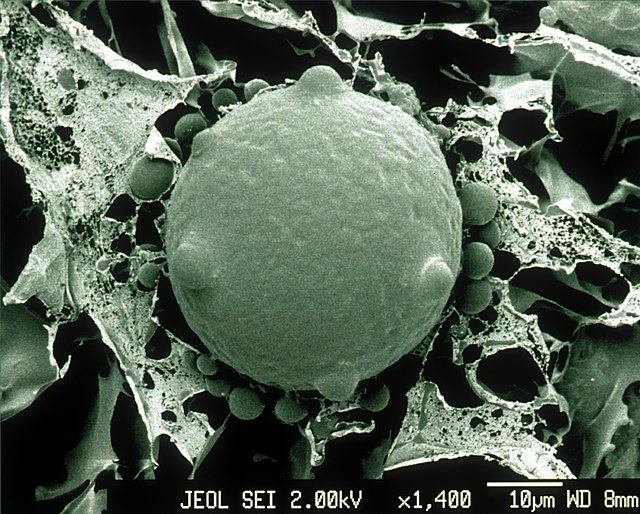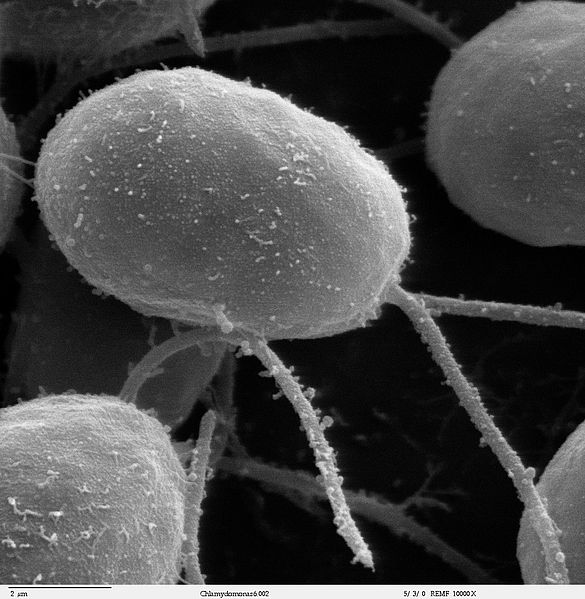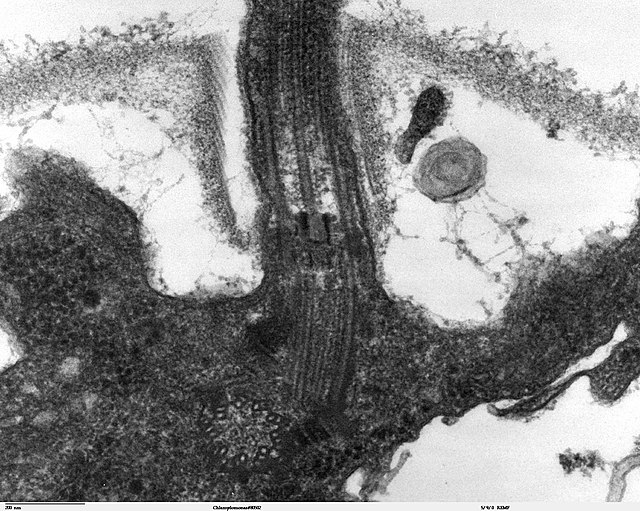The opisthokonts are a broad group of eukaryotes, including both the animal and fungus kingdoms. The opisthokonts, previously called the "Fungi/Metazoa group", are generally recognized as a clade. Opisthokonts together with Apusomonadida and Breviata comprise the larger clade Obazoa.
Opisthokont
Nuclearia (Nucleariida)
Microsporidian spore (Microsporidia)
Chytrid (flagellated fungus)
A flagellum is a hairlike appendage that protrudes from certain plant and animal sperm cells, from fungal spores (zoospores), and from a wide range of microorganisms to provide motility. Many protists with flagella are known as flagellates.
SEM image of flagellated eukaryote Chlamydomonas sp. (10000×)
Bacterial flagellar motor assembly: Shown here is the C-ring at the base with FliG in red, FliM in yellow, and FliN in shades of purple; the MS-ring in blue; the MotAB in brown; the LP-ring in pink; and the rod in gray.
Longitudinal section through the flagella area in Chlamydomonas reinhardtii. In the cell apex is the basal body that is the anchoring site for a flagellum. Basal bodies originate from and have a substructure similar to that of centrioles, with nine peripheral microtubule triplets (see structure at bottom center of image).
The "9+2" structure is visible in this cross-section micrograph of an axoneme.








